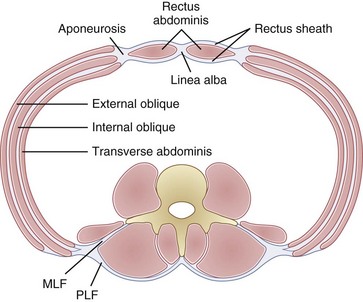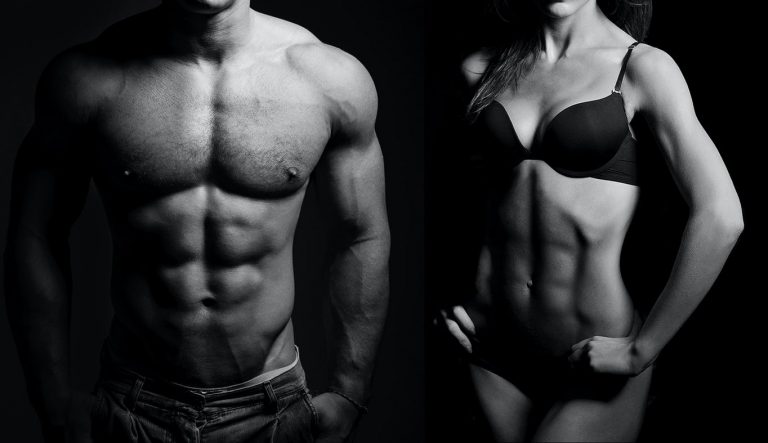How to Improve your Core Strength (you don't need a six pack)
Helping people improve their core strength is a key part of our job here at PhysiYoga. And starts by understanding how and why your abs are working (or not). Abs and bellies go hand in hand. For many people, their belly is one of the least favourite parts of their body. So it got me thinking… Is the shape of our tummy really that important?
Well no. And kind of, yes. Let me elaborate.
On one side, (the No side) it is largely an aesthetics issue – you might just like the look of a flat stomach, and that it totally fine. The other side of the issue, is that a common misunderstanding that a flat stomach is a “strong” one. But beware: having an aesthetically pleasing belly to look at doesn’t mean it is strong and functioning like it should.
You can have washboard abs and rubbish “core strength”.
Truth: Sure, you can chase a six pack if it makes you feel good about yourself. But improving your core strength is more complicated then simply training for “six pack abs”. Here’s why:
Core Strength Comes from Deep Down

In our four layers of abdominal muscles, two different muscles are responsible for feeling and looking strong:
- The deepest abdominal muscle layer (Transverses Abdominus – TA’s) is the one that wraps around your body like a corset. It works at low intensity all the time to support your spine and control your posture. Training the strength and endurance of transversus to switch on at the right time, in the right amount and the right order is what improves your core strength.
- Rectus Abdominus (AKA the six pack muscle) is the most superficial abdominal muscle. It attaches to the front of the pelvis and ribcage. Rectus doesn’t support your trunk in the same way because it can’t from where it attaches. It’s too far away from the spine to provide the same level of spinal control as transversus.
What is a six pack Anyway?
A “six pack” is a toned and bulked-up abdominal wall (Rectus Abdominus is the muscle you see), that is visible because of repetitive training and a low body-fat ratio (which is largely influenced by the genetics of how and where you store your body fat).
In order to strengthen a muscle (i.e. Rectus), you perform movements repetitively that challenge and load that muscle group (like ab crunches and planks).
But these same exercises doesn’t automatically mean you will be effectively switching on transverses, unless you have correct technique and are actively aware of how to engage transverses.
In fact, we see many people who get injured trying to train one muscle group without an understanding of how that is impacting their overall health and movement patterns.

Form and Function of Core Strength
Form of the abdominal wall = looking pretty
Function of the abdominal wall = crucial in enabling us to bend, lift, run, jump, carry, push and pull.
The importance in our view really comes down to function: Your abdominal wall functions synergistically (in cooperation with) with your pelvic floor, back and hip muscles in ways that make you feel stronger, more flexible and do the things you love. If any one of these regions become over or under active, you’ll eventually run into problems when you can’t meet the demands of the task (think leaking when you run or jump, getting a ‘stitch’, not being able to breathe easily, feeling stiff as a board when you try to bend).
How do I know if my core strength needs work?
Sometimes, you just feel it and know it in your bones. You feel stiff and weak and lack flexibility. You just feel vulnerable when you lift or bend or twist. You just don’t have the same endurance you used to in your body.
These are some common complaints we see for people who need to improve their core strength:
- Back stiffness or pain that’s worse the hours or days after you’ve been lifting and bending
- Not being able to bend easily
- Sore after a day in the garden
- Leaking when you cough, sneeze, laugh, lift heavy, jump or run
If you’ve had low back pain or mid back pain before – it’s common to have residual weakness. In the clinic, we may choose to look at the following aspects to determine your core strength:
- Your story paints a picture – what your problem is and what makes it better or worse
- We watch you move
- We have developed testing procedures (PhysiYoga Movement Variability Screen) to find your blind spots – areas that aren’t functioning as they should
- Palpation – we can feel which layer is working when you try to switch on your core
- Ultrasound – we can see in real time which muscles switch on during certain tasks. And we can use this to help you access the correct layer of abdominal muscles.
- If you try exercises for your posture and “core strength” and it makes you feel better. Or try a free Pilates class on our YouTube channel.
Key Messages
- The muscles responsible for your abdominal wall function (aesthetics vs “core strength”) work together, but they are different muscles, with different functions. Training needs to carefully consider both.
- Well defined abs are the product of low body fat, genetics and repetitive training of the most superficial of 4 layers of abdominal muscles. It doesn’t mean your abs are switching on in the right amount at the right time to achieve the goal of the task.
- A dysfunctional abdominal wall is related to low back pain, hip pain, pelvic pain and incontinence.
- There are ways to determine if your “core”/abdominal wall is functioning effectively and training it to improve – at any age or stage
- You can find out more about what your “core” actually is and how to switch it on in this educational presentations.
You can have a strong, active Rectus muscle, with little overlaying fat to make it look impressive (i.e. “six pack abs”). But having the goal to just get a strong Rectus Abdominus, will never support your spine the same way a well-functioning Transversus does.
It is important to train all layers of the abdominal wall, through a variety of tasks so that you are improving the function of all of your abs in conjunction with your lumbar spine, pelvis and hips.
And if you’re not sure if you need to improve your core strength, just try it anyway. Worst case scenario is that you try some new exercises and feel better. Best case scenario is that you might start to move better, feel more flexible or find some longer term solutions to some of those old niggles!

